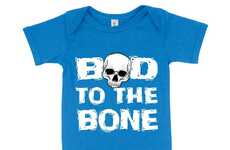
Pop Chart Labs Documented the Evolution of Graphic Design
Megan Facciuolo — May 5, 2014 — Art & Design
References: popchartlab & designtaxi
The evolution of graphic design has never stopped; there has been vast progression dating back to nearly 200 years ago. Pop Chart Labs decided to map out the progression on this clever poster.
The poster boasts the aesthetic advancement from the Victorian era to the modern digital age and everything in-between. Each memorable style is showcased in a black and white within a square component. Some examples of the graphics featured on the poster are from the finials and fronds of Art Nouveau, the Weimar utility of the Bauhaus and the taxonomical Data Visualization graphics.
This chart can serve as the perfect tool for designers in need of inspiration or reference, as it features so many different styles, compositions and patterns.
The poster boasts the aesthetic advancement from the Victorian era to the modern digital age and everything in-between. Each memorable style is showcased in a black and white within a square component. Some examples of the graphics featured on the poster are from the finials and fronds of Art Nouveau, the Weimar utility of the Bauhaus and the taxonomical Data Visualization graphics.
This chart can serve as the perfect tool for designers in need of inspiration or reference, as it features so many different styles, compositions and patterns.
Trend Themes
1. Graphic Design Evolution - Opportunity for disruptive innovation in the graphic design industry by exploring new styles and pushing creative boundaries beyond existing design conventions.
2. Data Visualization Advancements - Opportunity for disruptive innovation in the data visualization industry by exploring new taxonomical methods to showcase complex data in an appealing and informative format.
3. Design Inspirational Tools - Opportunity for disruptive innovation in the tool development industry by creating new software or applications that utilize design evolution data to inspire designers and offer references for projects.
Industry Implications
1. Graphic Design - The graphic design industry can explore new styles and push creative boundaries beyond existing design standards using the design evolution chart as a reference and inspiration.
2. Data Visualization - The data visualization industry can explore new taxonomical methods to showcase complex data in an appealing and informative format using examples from the design evolution chart.
3. Software/tool Development - The tool development industry can create new software or applications that utilize design evolution data to inspire designers and offer references for projects, which can be used by designers in various industries.
2.2
Score
Popularity
Activity
Freshness























